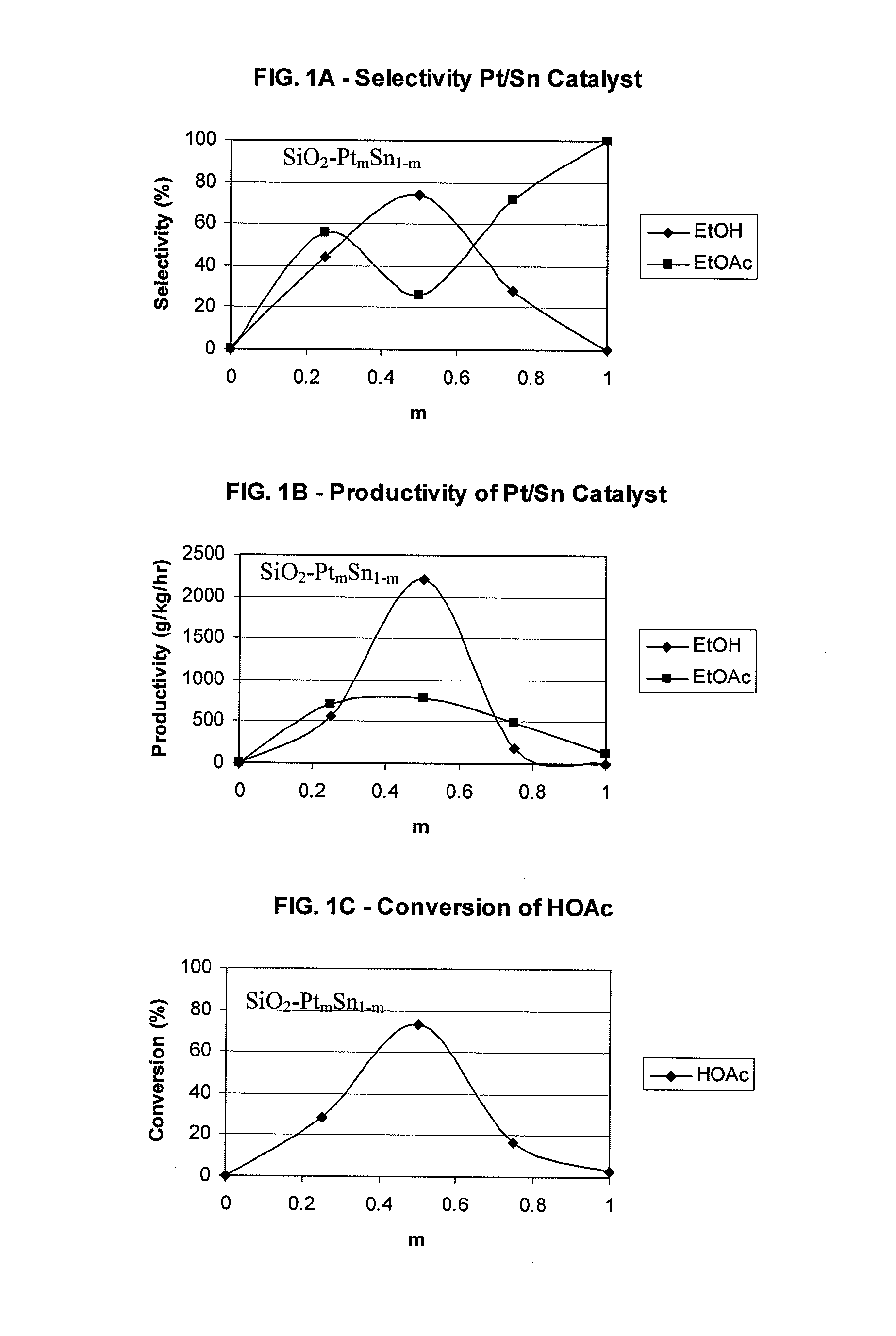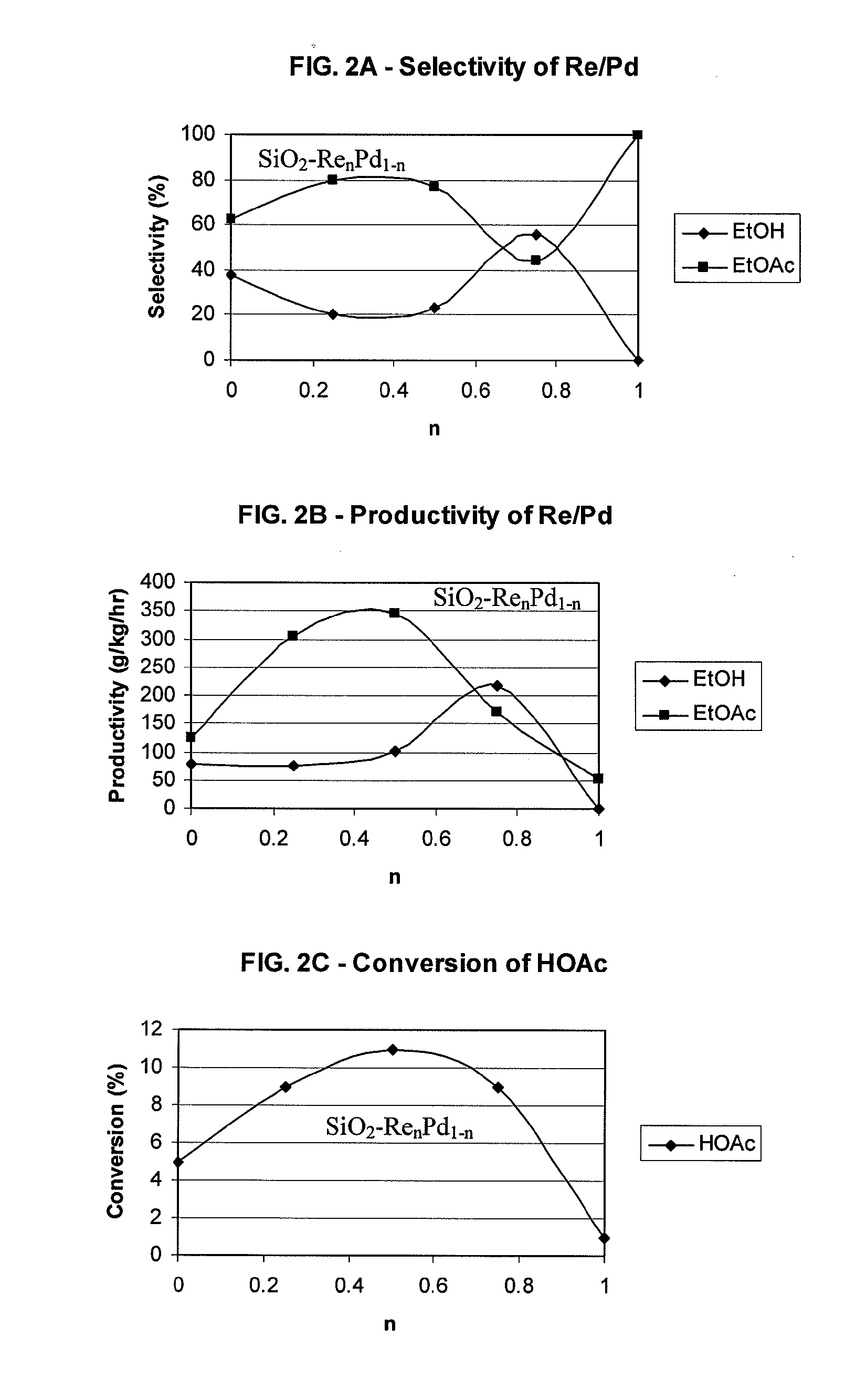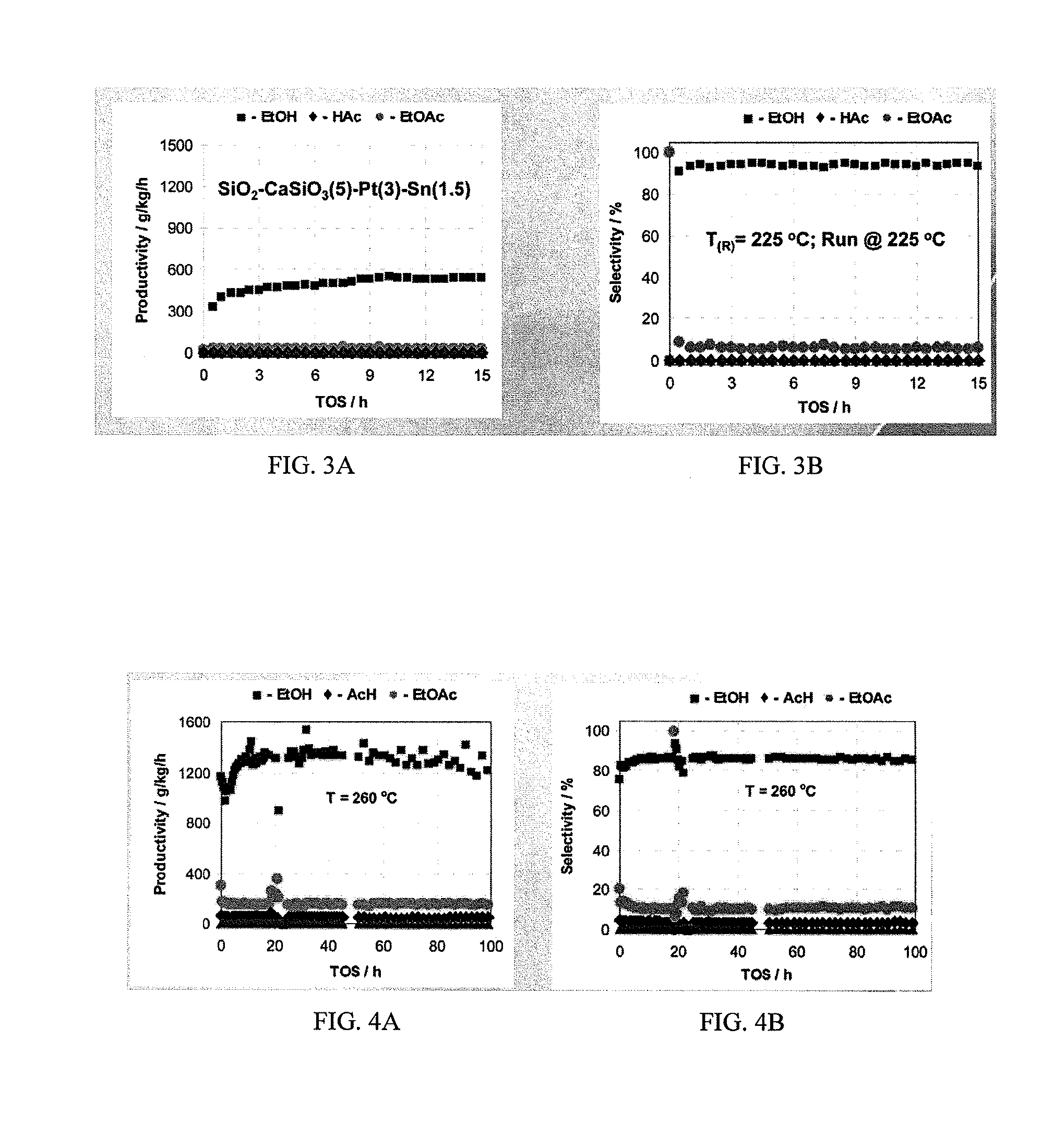Catalysts for making ethanol from acetic acid
- Summary
- Abstract
- Description
- Claims
- Application Information
AI Technical Summary
Benefits of technology
Problems solved by technology
Method used
Image
Examples
example 1
SiO2—CaSiO3(5)-Pt(3)-Sn(1.8) Catalyst
[0113]The catalyst was prepared by first adding CaSiO3 (Aldrich) to the SiO2 catalyst support, followed by the addition of Pt / Sn. First, an aqueous suspension of CaSiO3 200 mesh) was prepared by adding 0.52 g of the solid to 13 ml of deionized H2O, followed by the addition of 1.0 ml of colloidal SiO2 (15 wt. % solution, NALCO). The suspension was stirred for 2 hours at room temperature and then added to 10.0 g of SiO2 catalyst support (14 / 30 mesh) using incipient wetness technique. After standing for 2 hours, the material was evaporated to dryness, followed by drying at 120° C. overnight under circulating air and calcination at 500° C. for 6 hours. All of the SiO2—CaSiO3 material was then used for Pt / Sn metal impregnation.
[0114]The catalysts were prepared by first adding Sn(OAc)2 (tin acetate, Sn(OAc)2 from Aldrich) (0.4104 g, 1.73 mmol) to a vial containing 6.75 ml of 1:1 diluted glacial acetic acid (Fisher). The mixture was stirred for 15 min a...
example 2
KA160—CaSiO3(8)-Pt(3)-Sn(1.8)
[0115]The material was prepared by first adding CaSiO3 to the KA160 catalyst support (SiO2-(0.05) Al2O3, Sud Chemie, 14 / 30 mesh), followed by the addition of Pt / Sn. First, an aqueous suspension of CaSiO3 (≦200 mesh) was prepared by adding 0.42 g of the solid to 3.85 ml of deionized H2O, followed by the addition of 0.8 ml of colloidal SiO2 (15 wt. % solution, NALCO). The suspension was stirred for 2 hours at room temperature and then added to 5.0 g of KA160 catalyst support (14 / 30 mesh) using incipient wetness technique. After standing for 2 hours, the material was evaporated to dryness, followed by drying at 120° C. overnight under circulating air and calcinations at 500° C. for 6 hours. All of the KA160—CaSiO3 material was then used for Pt / Sn metal impregnation.
[0116]The catalysts were prepared by first adding Sn(OAc)2 (tin acetate, Sn(OAc)2 from Aldrich) (0.2040 g, 0.86 mmol) to a vial containing 6.75 ml of 1:1 diluted glacial acetic acid (Fisher). The...
example 3
SiO2—CaSiO3(2.5)-Pt(1.5)-Sn(0.9)
[0117]This catalyst was prepared in the same manner as Example 1, with the following starting materials: 0.26 g of CaSiO3 as a support modifier; 0.5 ml of colloidal SiO2 (15 wt. % solution, NALCO), 0.3355 g (0.86 mmol) of Pt(NH3)4(NO3)2; and 0.2052 g (0.86 mmol) of Sn(OAc)2. Yield: 10.90 g of dark grey material.
PUM
| Property | Measurement | Unit |
|---|---|---|
| Fraction | aaaaa | aaaaa |
| Fraction | aaaaa | aaaaa |
| Fraction | aaaaa | aaaaa |
Abstract
Description
Claims
Application Information
 Login to View More
Login to View More - R&D
- Intellectual Property
- Life Sciences
- Materials
- Tech Scout
- Unparalleled Data Quality
- Higher Quality Content
- 60% Fewer Hallucinations
Browse by: Latest US Patents, China's latest patents, Technical Efficacy Thesaurus, Application Domain, Technology Topic, Popular Technical Reports.
© 2025 PatSnap. All rights reserved.Legal|Privacy policy|Modern Slavery Act Transparency Statement|Sitemap|About US| Contact US: help@patsnap.com



